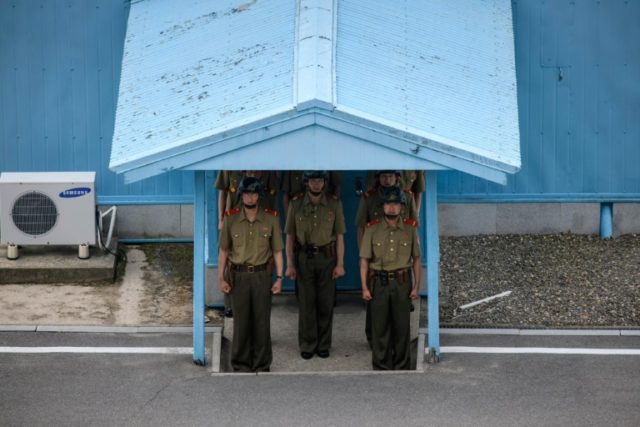Scientists have confirmed the identity of two service members whose remains were returned by North Korea in July, officials from the Defense POW/MIA Accountability Agency announced on Monday.
Officials confirmed that they would not announce the names of the servicemen until their families are notified, although they are both believed to have died in late 1950 at the onset of the Korean War. They are understood to have died near the Chongchon River as the U.S. suffered heavy casualties at the hands of Chinese troops.
“One of the reasons that we were able to identify them so quickly [was because their remains] were more complete than usual so it gave us more to look at and narrow down the identity with,” said John Byrd, director of scientific analysis at the Defense POW/MIA Accounting Agency, from a facility in Joint Base Pearl Harbor-Hickam in Hawaii where work to identify the bodies is ongoing.
The confirmation comes nearly two months after North Korea agreed to return 55 boxes of remains to the United States following a meeting between President Donald Trump and communist dictator Kim Jong-un in Singapore. They were welcomed home to the Joint Base Pearl Harbor-Hickam by Vice President Mike Pence, who described the event as “just a beginning” as work will not stop until all of the missing are fully accounted for.
Scientists say it is unclear whether some of the boxes contain the remains of more than one body. They are mainly working through bone fragments as well as possessions such as helmets, combat boots, and a mess kit. It could, therefore, take years to identify all the bodies correctly, with the process requiring the use of DNA samples, analyzing dental records, and chest X-rays.
According to estimates from the Department of Defense, there are approximately 7,700 U.S. troops who remain missing from the Korean War. Of those, around 5,300 American casualties are still believed to be in North Korea.
Violent conflict in the Korean War took place between 1950-1953, five years after the end of World War II. The two nations are still technically at war, but hostilities ended following the signing of what was intended to be a temporary armistice in 1953.
Neither side has surrendered or proposed a fully fledged treaty to end the war, although relations between the two countries have warmed over the past year amid various peace initiatives that included a historic meeting between Kim Jong-un and South Korean leader Moon Jae-in.
Follow Ben Kew on Facebook, Twitter at @ben_kew, or email him at bkew@breitbart.com.

COMMENTS
Please let us know if you're having issues with commenting.